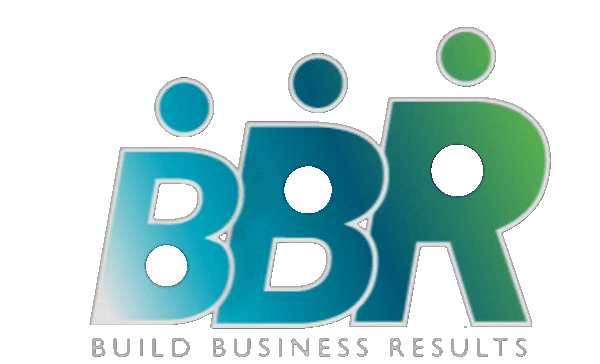Facebook Dynamic Ads: 5 Tips to Drive More Product Sales

Dynamic ads are a great way to promote your products or services. The main obstacle in running ads is how to optimize them to get better results. There are several things that come in the way of optimizing a Facebook dynamic ad. They involve targeting, retargeting and many more.
In this article, you get to explore how to optimize Facebook Dynamic ads to get better conversion results and improve your sales.
See you on the action-field,
Raksha Sukhia, SMB Growth Expert,
Founder BBR Network. #bbrnetwork
Do you run Facebook dynamic ads to promote your products? Wondering how to improve your results?
In this article, you’ll discover how to optimize Facebook dynamic product ads for more sales.
#1: Promote Separate Catalogs for Broad and Themed Product Categories
Many Facebook advertisers test stand-alone ads and can see which products and creatives perform best long before they start testing dynamic product ads. With the information you glean from early testing, you can take a single high-performing ad and turn it into a potentially high-value product catalog.
Let’s say you’re a cosmetic brand, and in your testing, you discover that images of women next to products that complement their specific skin tone perform well. You could then take this information and build entire catalogs of that group of relevant products.
Instead of promoting a single product at a time or running Facebook carousel ads that show random products, grouping products into themed catalogs by the skin tone of the wearer or the aesthetic that person is going for (like a “natural” look as opposed to purple lipstick and blue eyeshadow) can increase product add-ons and average order values.
In the example below, Vuori displays different variants of their top-selling shorts, showing Facebook users more versions of a high-value product at one time.
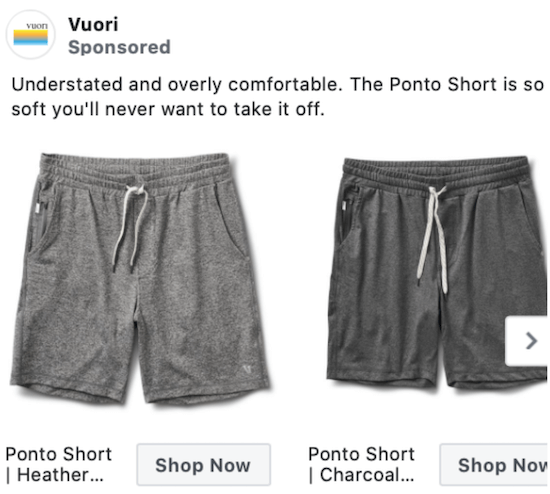
Testing is the name of the game when it comes to Facebook ads, and while setting up niche product catalogs can be good for creating dynamic ads with high conversion and add-on rates, it shouldn’t be your only strategy. I also recommend testing different broad product categories that make sense, especially for early campaigns when customers aren’t yet familiar with your business.
If you’re a clothing company, you may create one product catalog for men’s clothing and one for women’s clothing. You might also have product catalogs for each season or break down products by price point and then place higher cost per acquisition (CPA) bids for higher-value items.
For example, the ad below showcases baby items exclusively, even though The Simple Folk offers a wider range of products on their site. Creating product sets based on age groups increases the potential for add-on purchases.
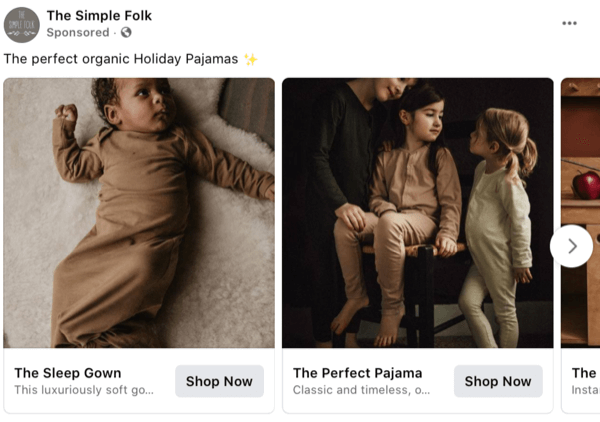
Pro Tip: When testing, make sure you have enough budget to get 50 conversions per ad set per week to give Facebook time to assess performance and optimize your campaigns accordingly. This will give you a more accurate look at campaign performance than if you rush to make a decision after a few days.
Choosing the Best Image Style for Your Catalog
Deciding which types of images to use for your Facebook campaigns can be challenging, and testing ultimately is the best way to determine what works best for your audience, product, and industry. You may find that single product images on white backgrounds with plenty of negative space perform best. Or perhaps grouping products together in a single image or showing the product in use works best.
Below, Wren + Glory uses multiple types of product images in a single carousel, including an image with a single product and an image with multiple products next to each other.
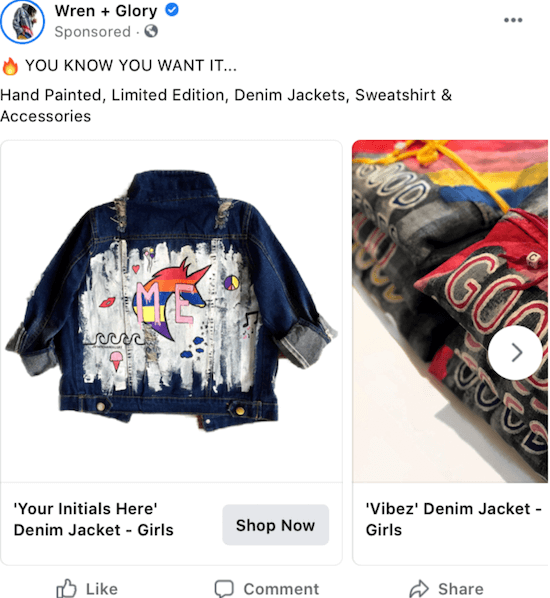
To determine what works best for your business, set up split testing with different types of images and videos while keeping the rest of your creatives the same. Facebook will optimize your ads automatically and you can see what imagery drives more interest.
#2: Provide Contextual Product Details
With Facebook dynamic ad formats, people will see ad versions that they’re most likely to interact with based on their past on-platform activity and will be taken to a relevant destination site.
When you set up dynamic product ads, you can repurpose assets like “brand name” or “price” to apply relevant product catalog information into the standard copy you’ve created for these ads.
At the ad level, you’ll see a + button next to each text field. Clicking this button reveals options to incorporate dynamic information like brand, description, retailer ID, and price. This data will be pulled from your data feed for each product shown.
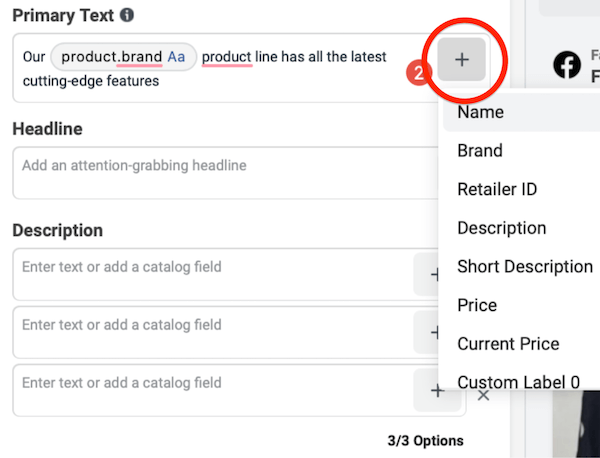
Facebook lets you preview how this dynamic formatting will appear across multiple placements to ensure that it works for your campaigns.
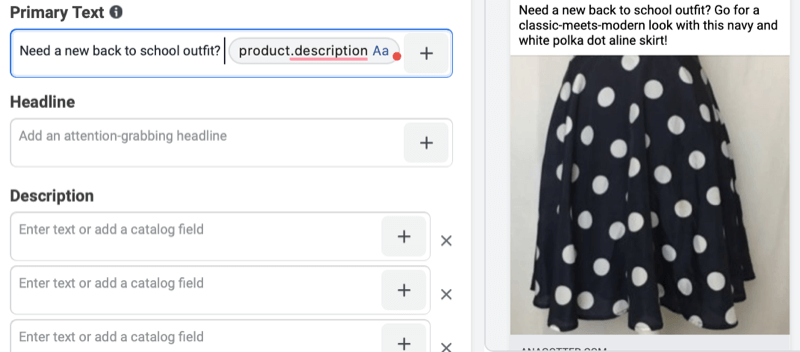
#3: Localize Language and Pricing for International Ads
When expanding your Facebook ad campaigns internationally, you may need to factor in language and pricing. Someone in Germany will most likely be able to read an ad written in English, but if they see the U.S. dollar sign instead of a euro, they may automatically assume the product isn’t for them.
Customizing the language and pricing in your ad based on the viewer’s location is an important step when scaling your campaigns to new territories.
When you set up your campaign, click Add Languages in the Languages section.
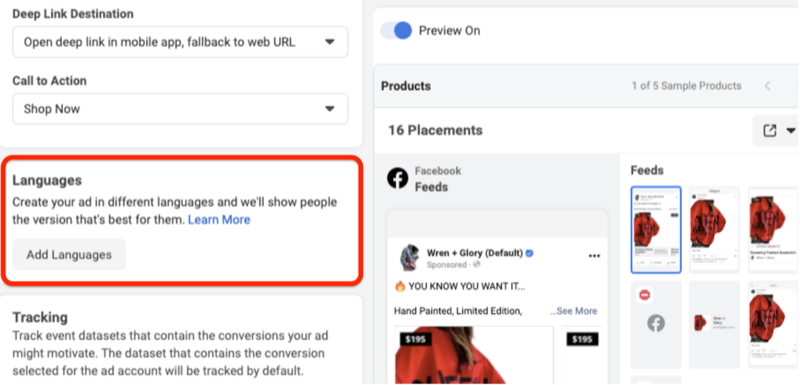
You’ll then see an option to connect to different product feed files that have product titles and descriptions in different languages. You can also choose to upload a feed file for your products that contains local pricing, currency, and sizing for different countries, if relevant.
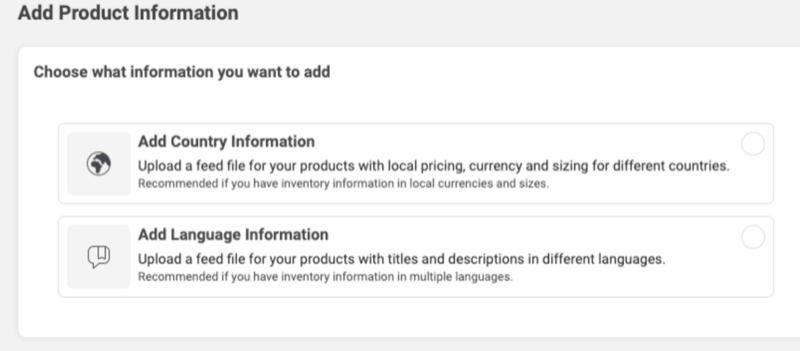
Facebook has native translation features that users can rely on but it’s best to serve ads to users in their native language so no intricacies are lost in auto-translation. This approach also shows customers that you’re intentional about serving their specific market, which can help you build trust and credibility.
#4: Enhance Static Creatives With Frames and Pricing Overlays
Adding product pricing not only to a carousel description but also to an ad’s image is a common tactic. It helps draw the viewer’s attention to the price point when they’re scrolling, which in turn helps increase conversions.
When you’re working at scale, however, adding prices to static images can be challenging. Pricing often changes over time due to sale prices, special promotions, or standard changes in the market. Having to go back and edit every product image in your data feed would be time-consuming.
An easier approach is to use frames and price overlays to turn static images into dynamic ones that feature up-to-date information in real time. Currently, Facebook lets you include information about pricing and free shipping on your images when you’re running dynamic ads with the objectives of App Installs, Leads, and Catalog Sales.
To incorporate these details into your ads, you must select Single Image or Video as the ad format. Then under Creative Tools, click Edit Creative and select either Add Catalog Info or Add a Frame.

The example below shows how to add pricing information to an ad. Facebook lets you customize the shape, color, font, and position of the tag that shares this information.

You can also upload frames to make evergreen content seasonal, like adding a Christmas garland frame surrounding your products before the holidays.
#5: Choose Your First Image Visual Wisely
If you’re using Facebook dynamic ads or carousel ads, the first image is essential. It’s what users see initially in the feed and can determine whether they interact with the ad.
The default option is to let Facebook automatically assign the product in the first card according to signals it has for what the person may be interested in. Another option is to choose your own image or video—and therefore show unique content that represents your brand—before showcasing your products.
I recommend testing both approaches to see what works best for your business.
Conclusion
Facebook dynamic ads are an invaluable tool for creating and managing ad campaigns at scale. Instead of needing to create separate ads for each product, you can run a single campaign that links to an entire product catalog or data feed. Facebook will optimize your ads for you naturally, which can lead to better results, as the algorithms are able to serve ads to users most likely to take certain actions.
When you’re using the right tactics, these ads can increase your conversion rates while taking some of the burden of creation off of your shoulders. This gives you more time to manage your campaigns, generate new ideas, and find ways to accomplish your marketing goals.
What do you think? Which of these tactics will you try in your next campaign? Share your thoughts in the comments below.
Related Article
What’s a Good Landing Page Conversion Rate?
Business Agility Is the New Norm. Do You Have What It Takes?
Tags
#BBR Network, #LinkedIn #Social Media Marketing, #Profitability, #Small Business Growth, #Small Business Marketing and Sales, #SMB, #SME, B2B, Build Business Results, Build Business Results (BBR), Build Business Results (BBR) Mastermind.
